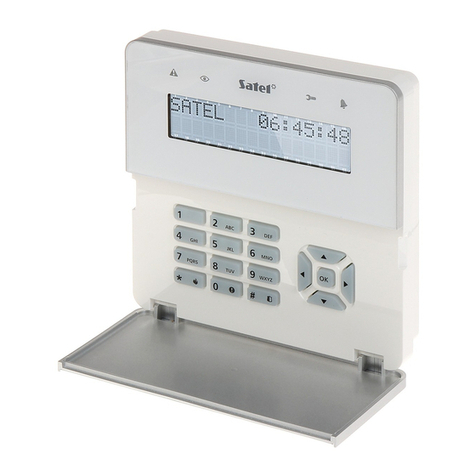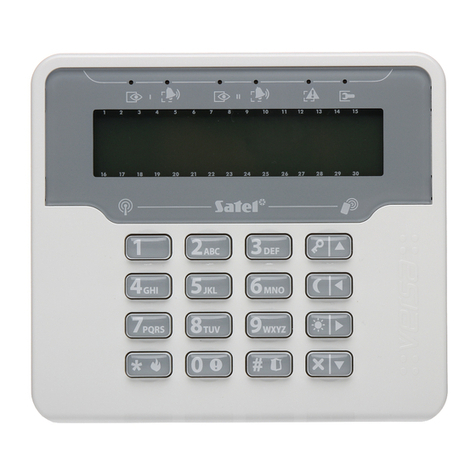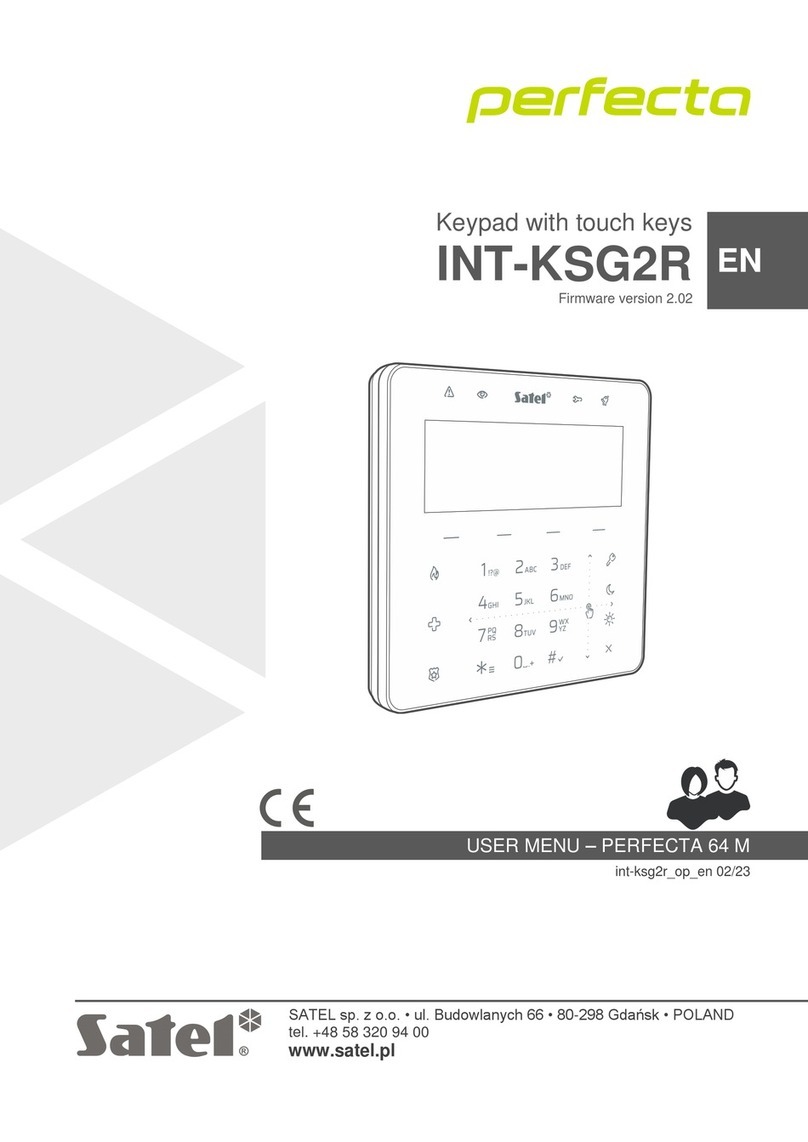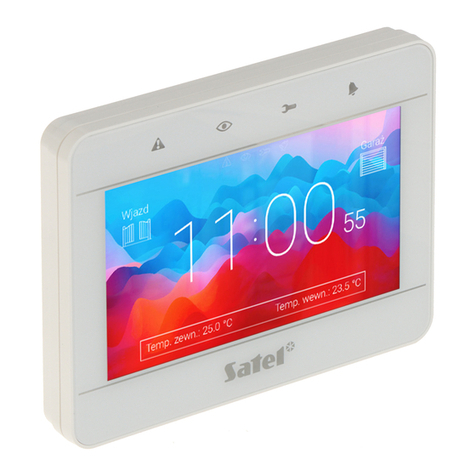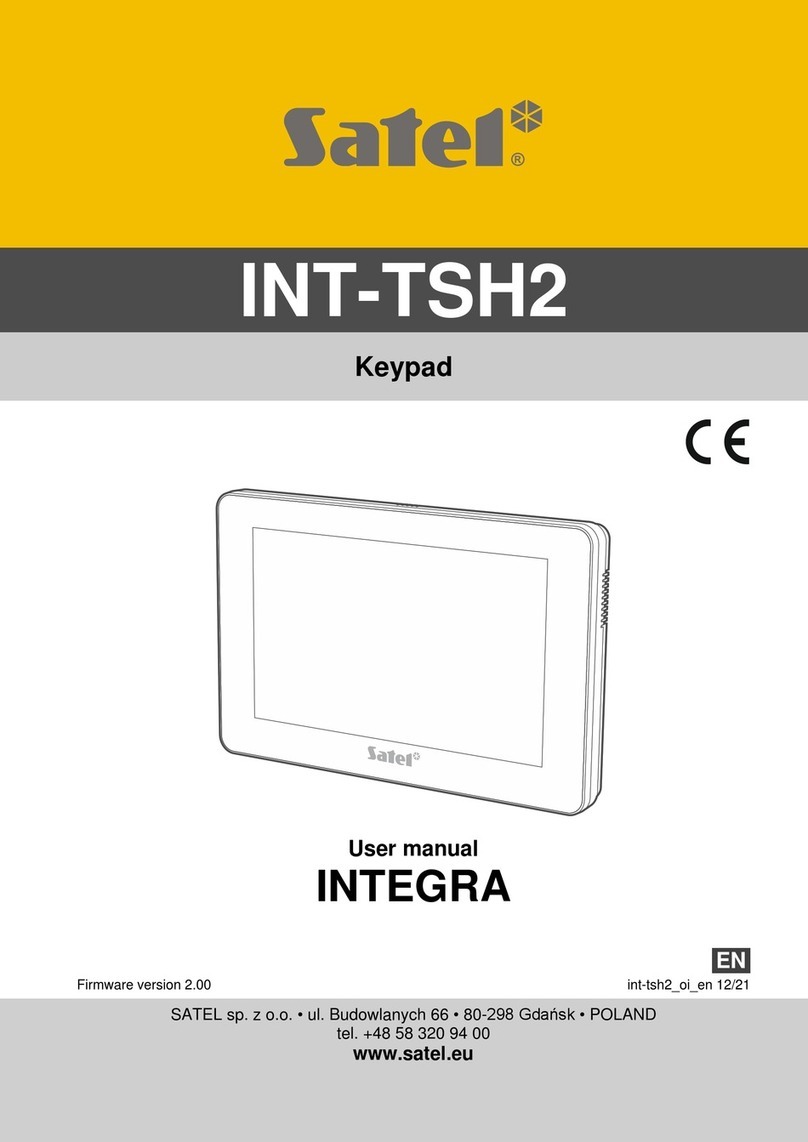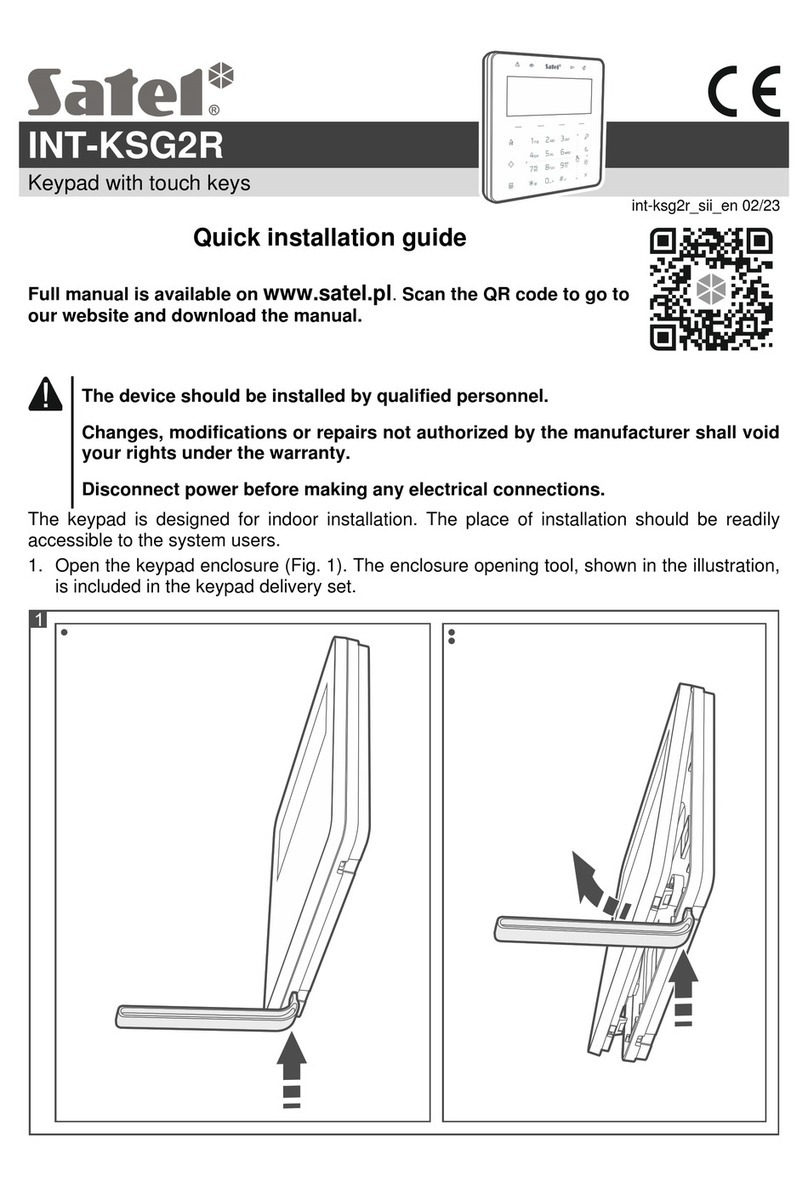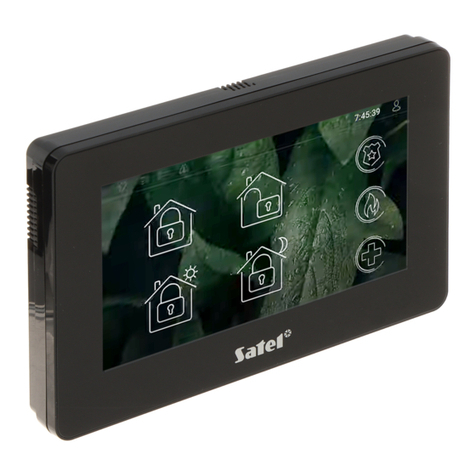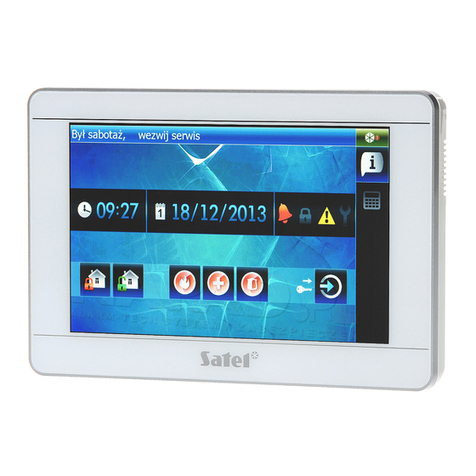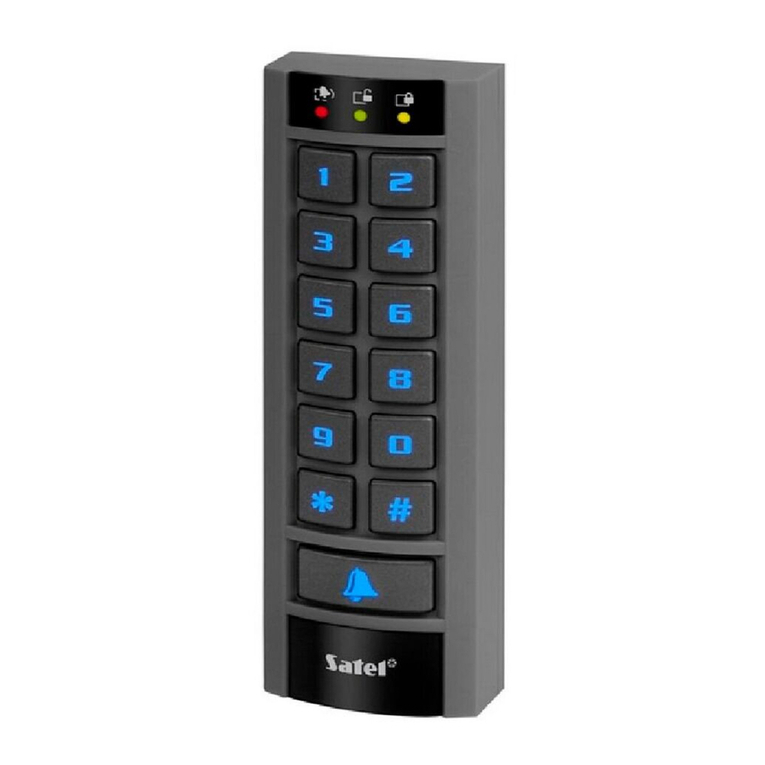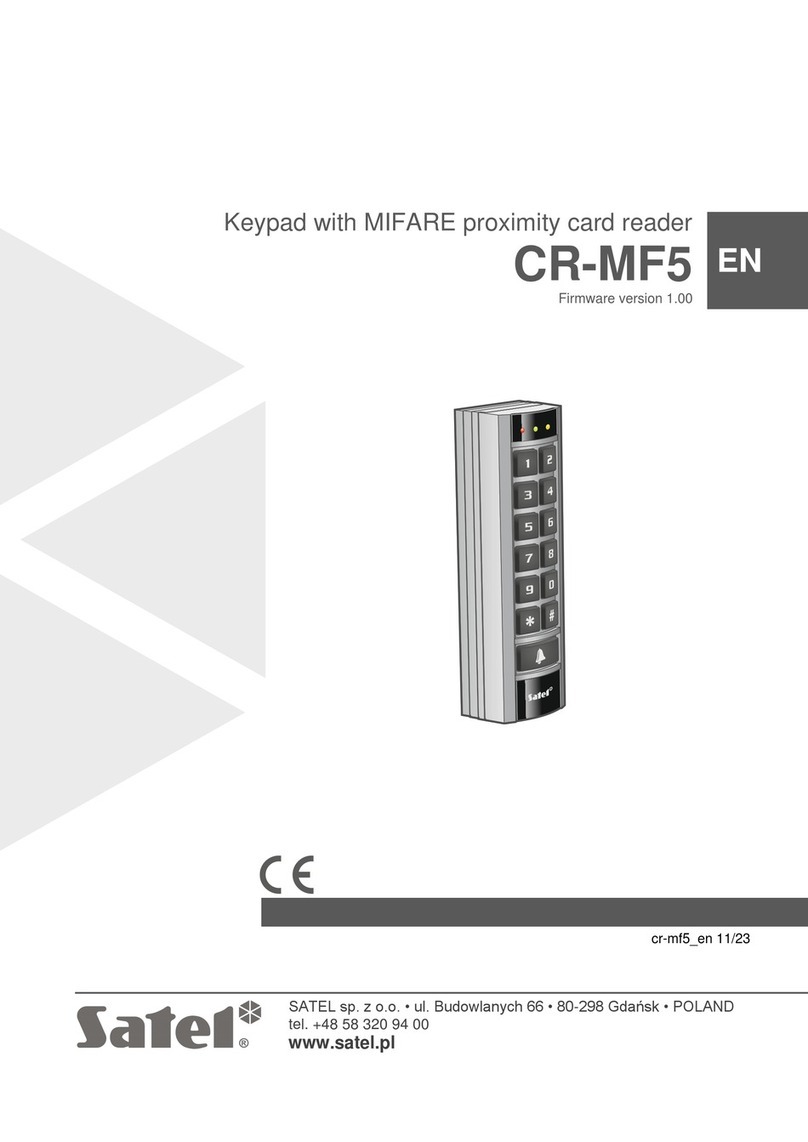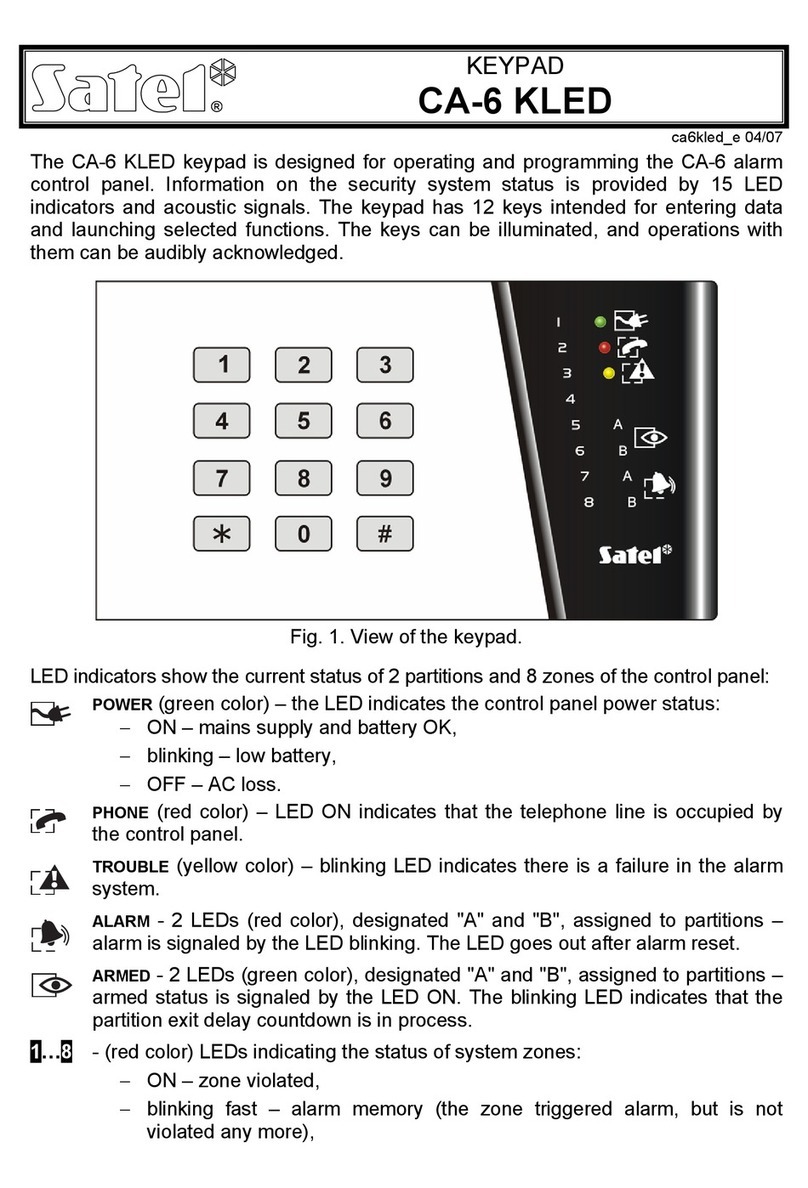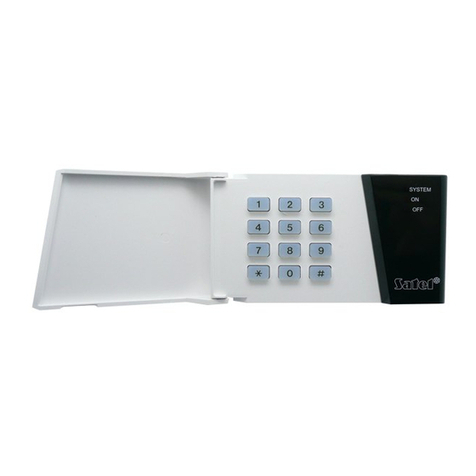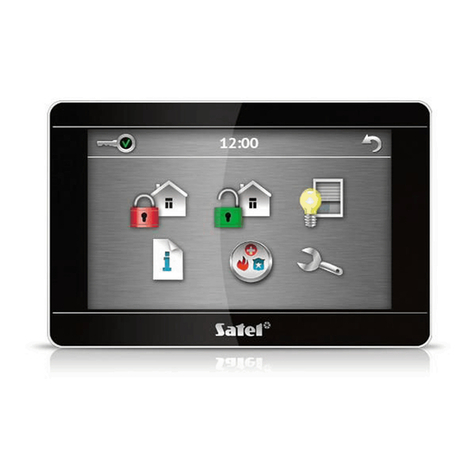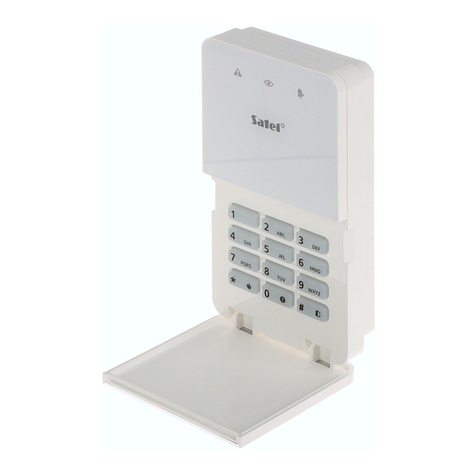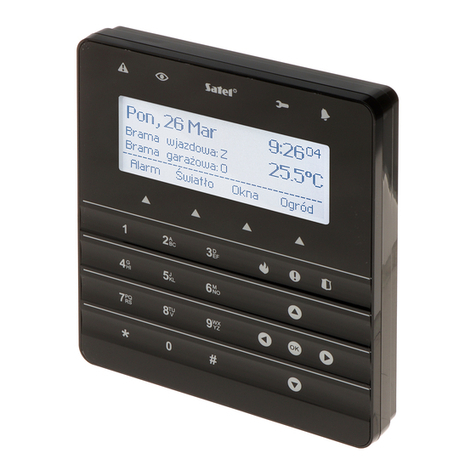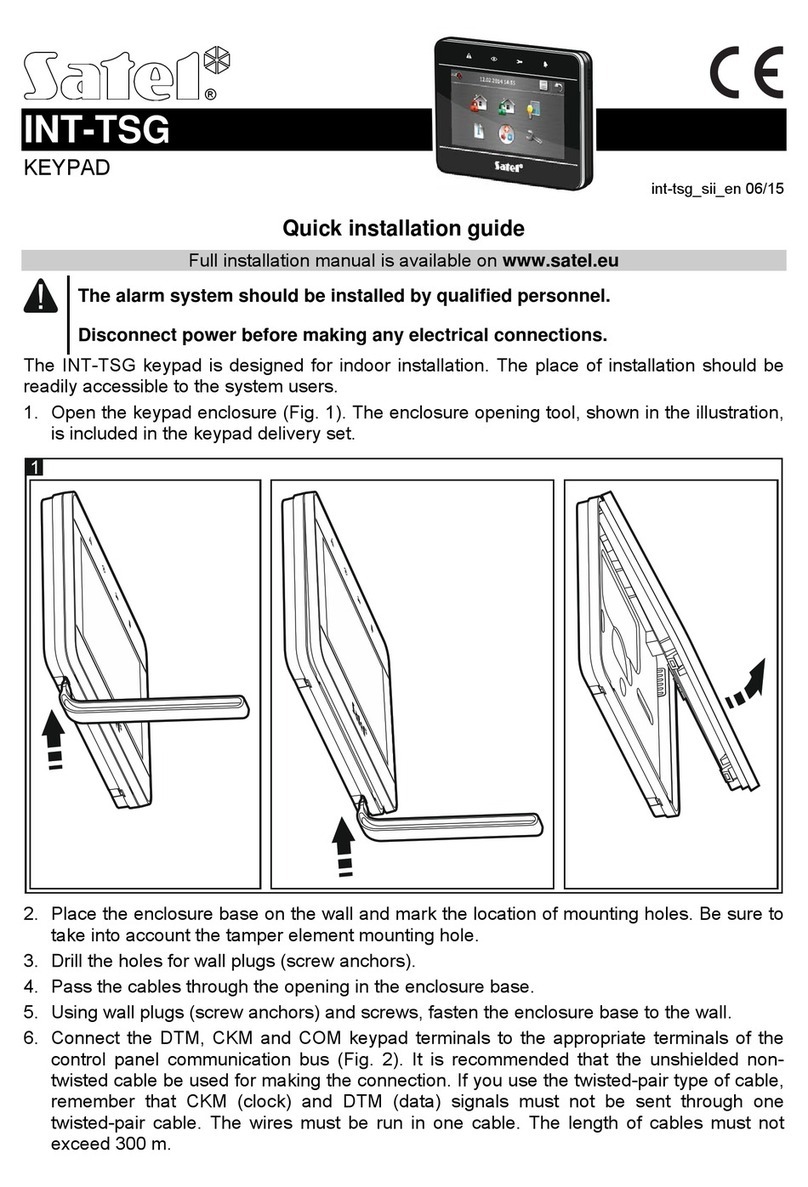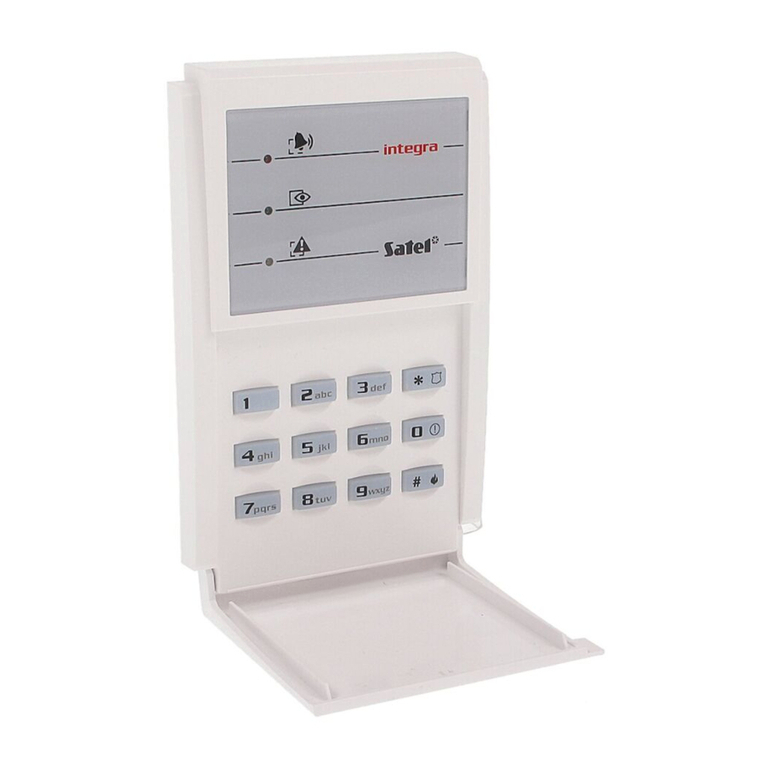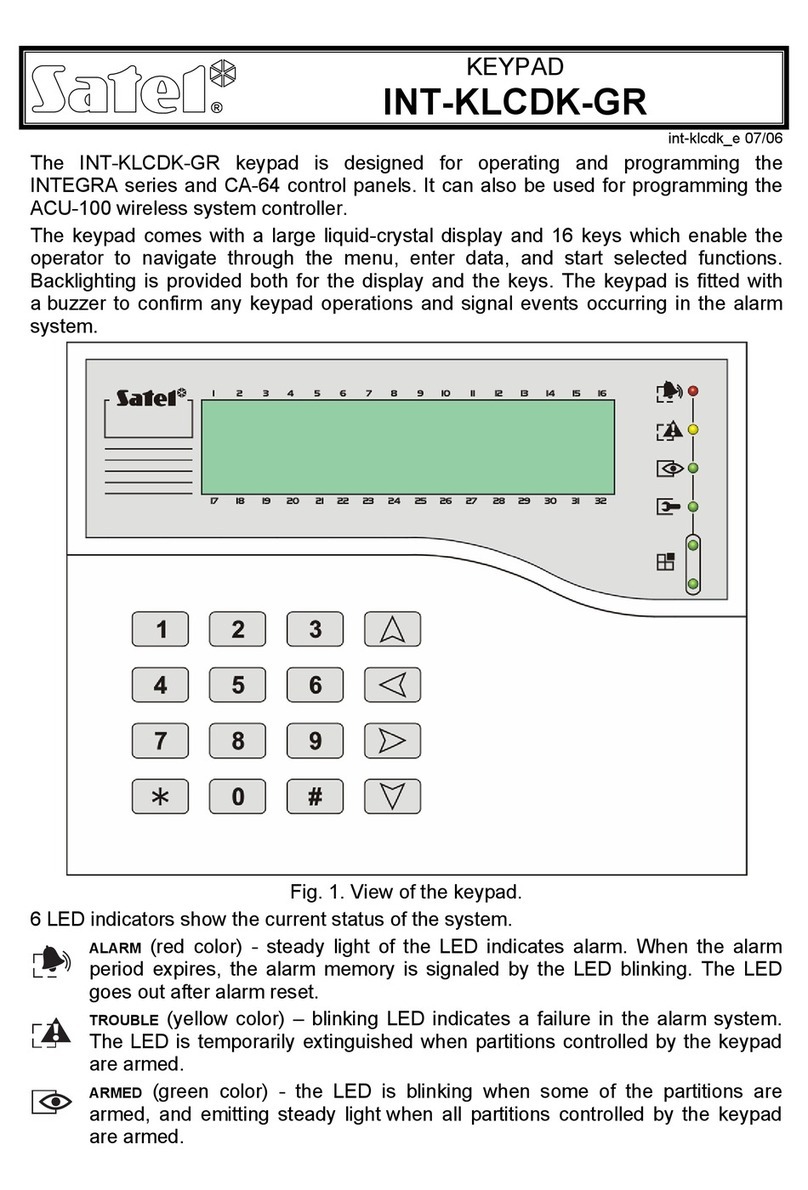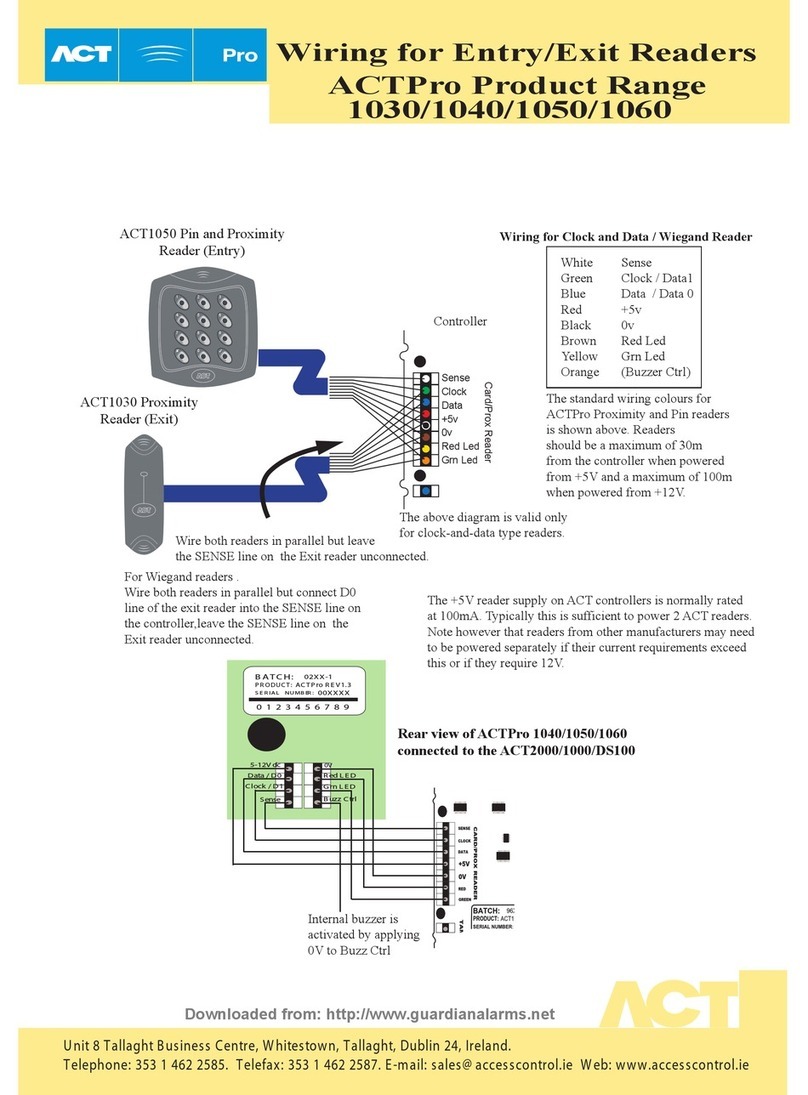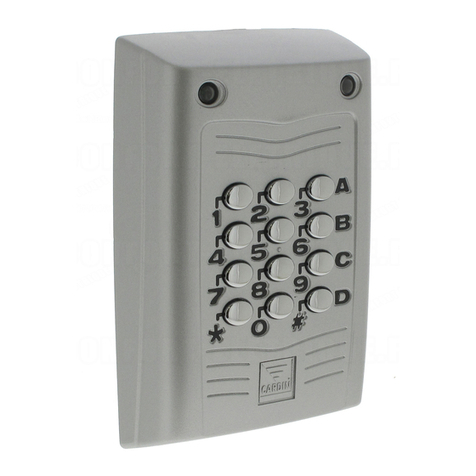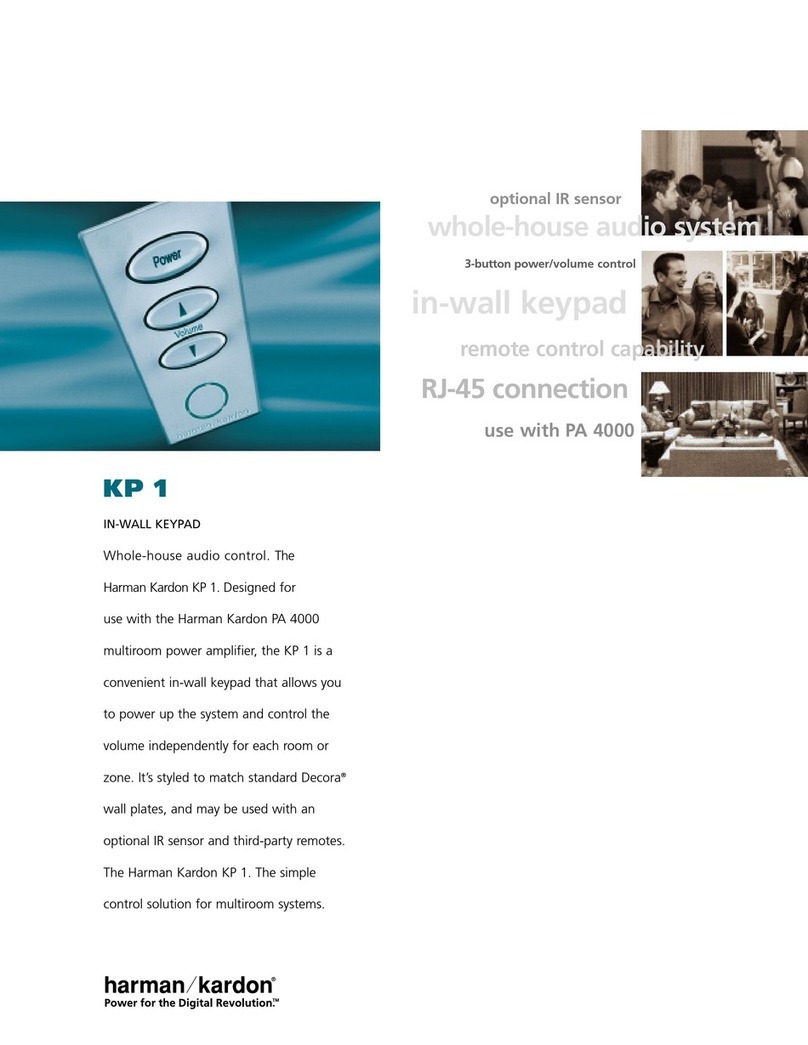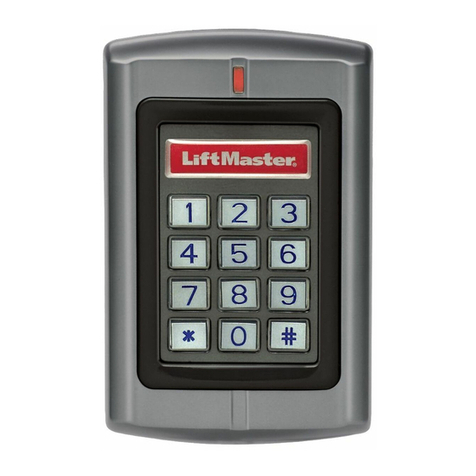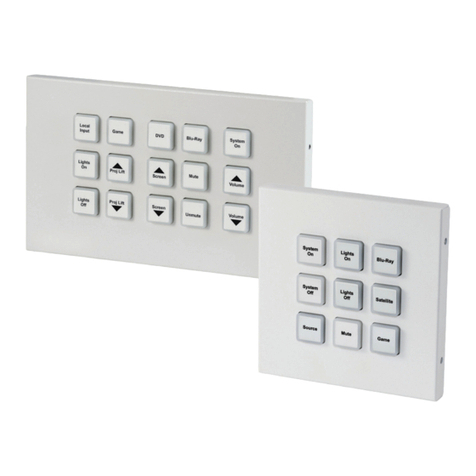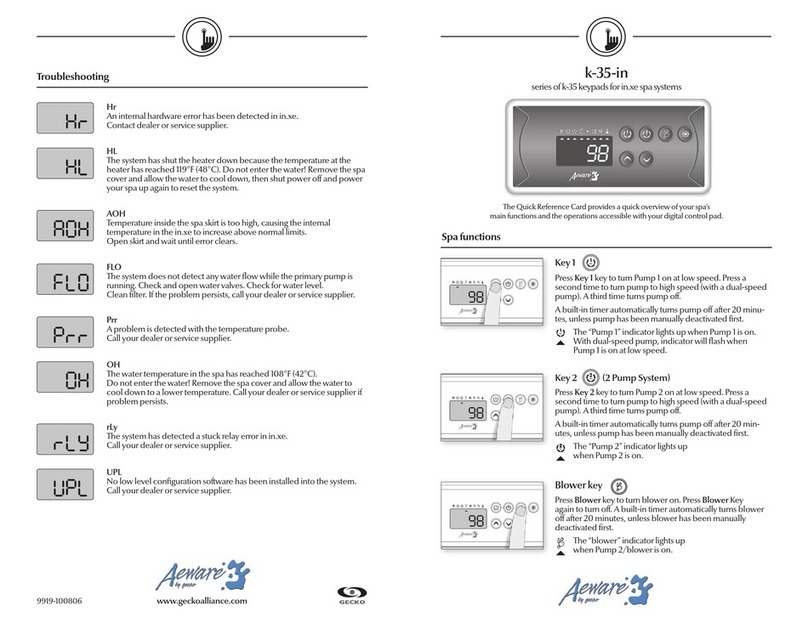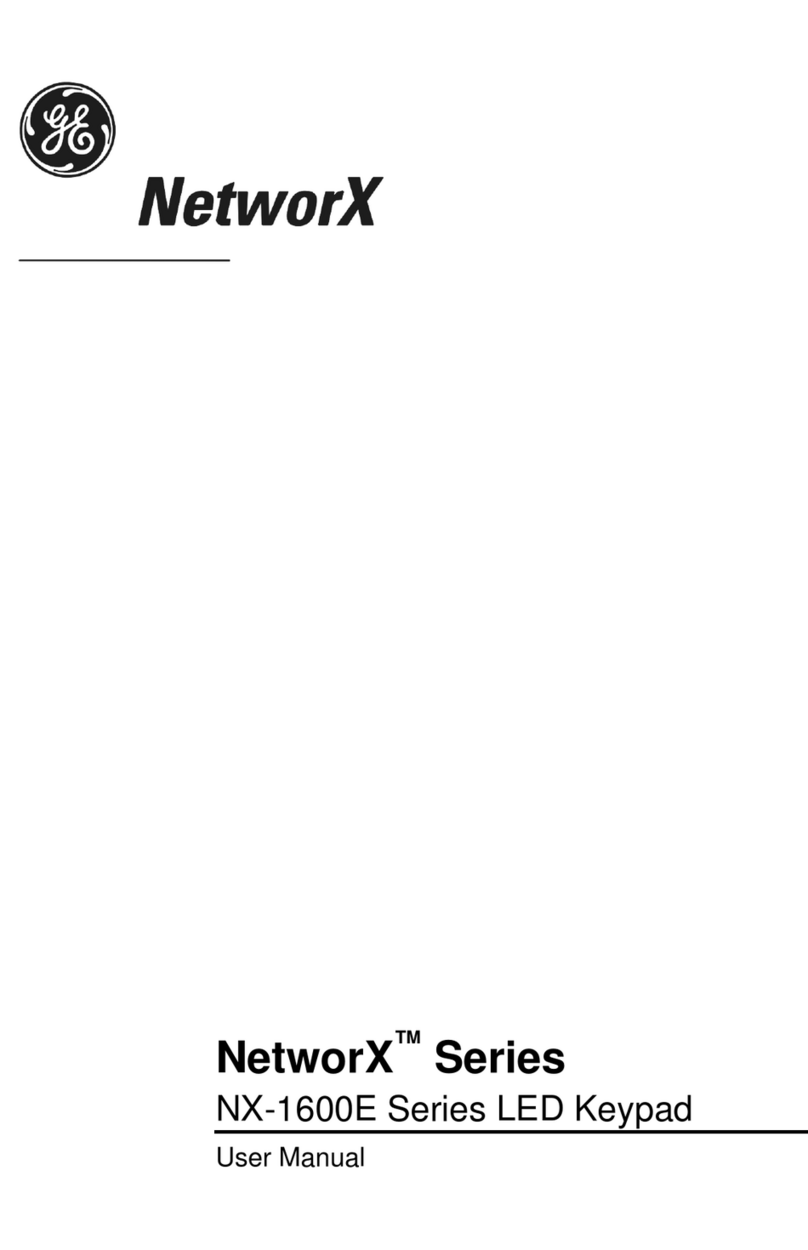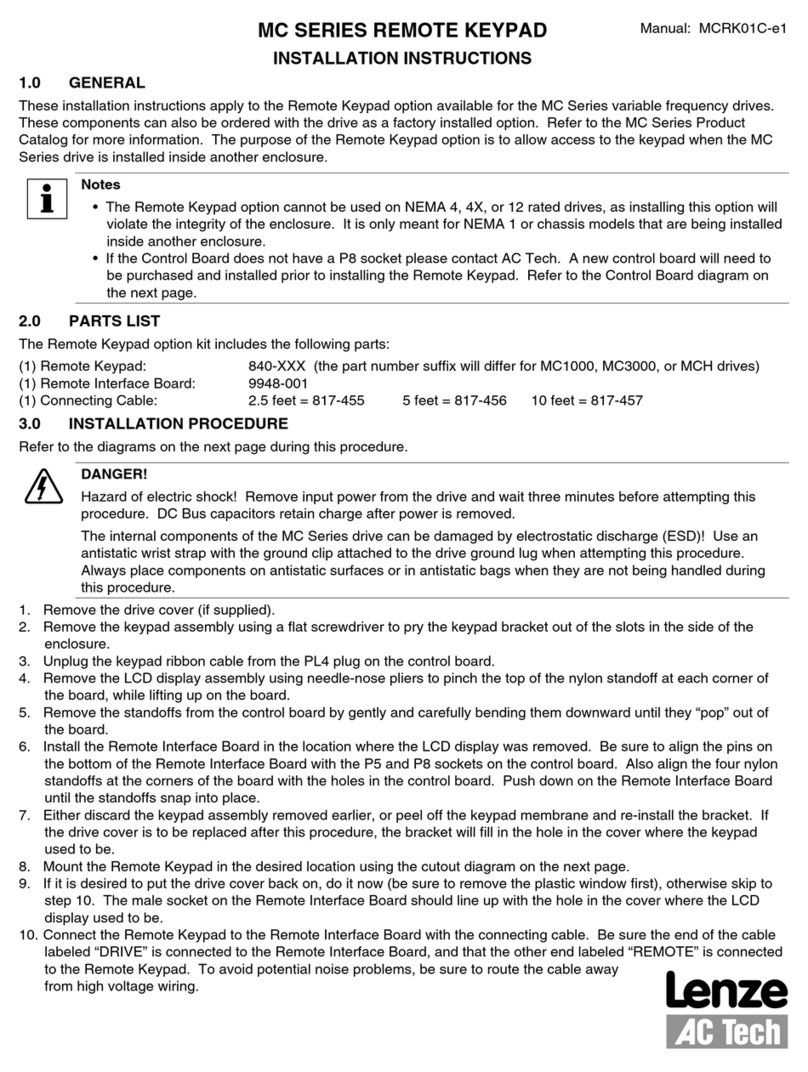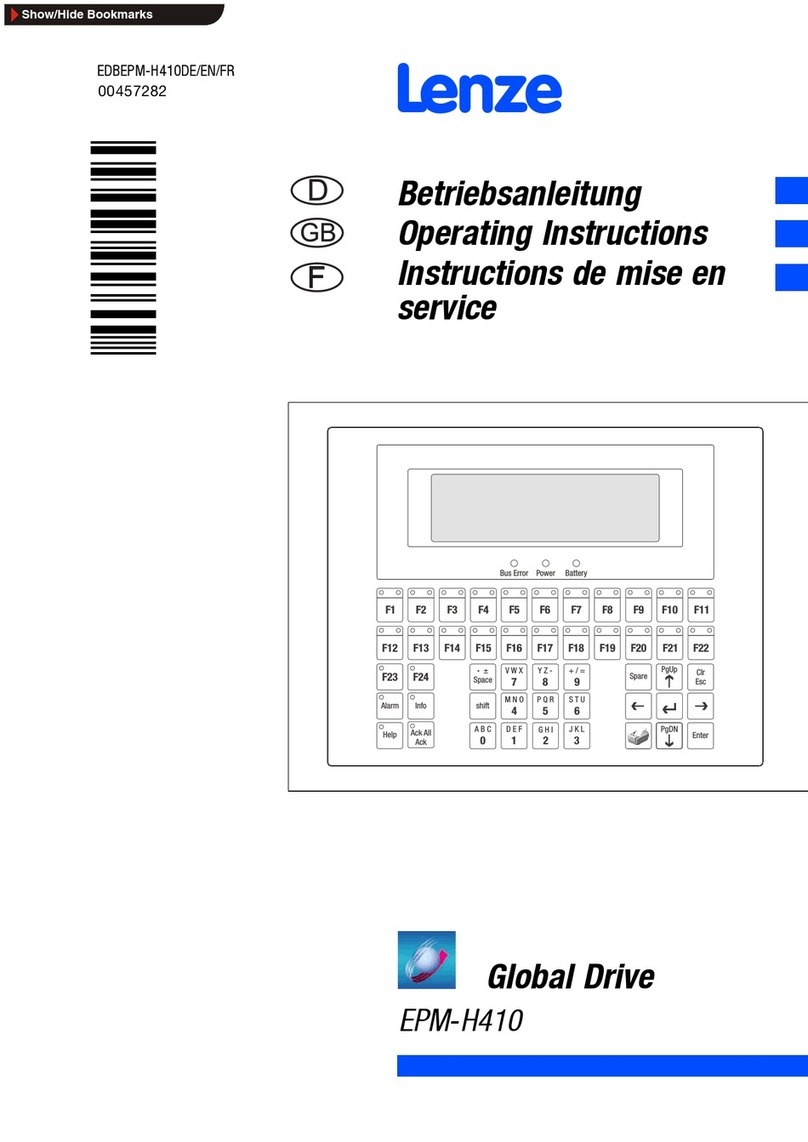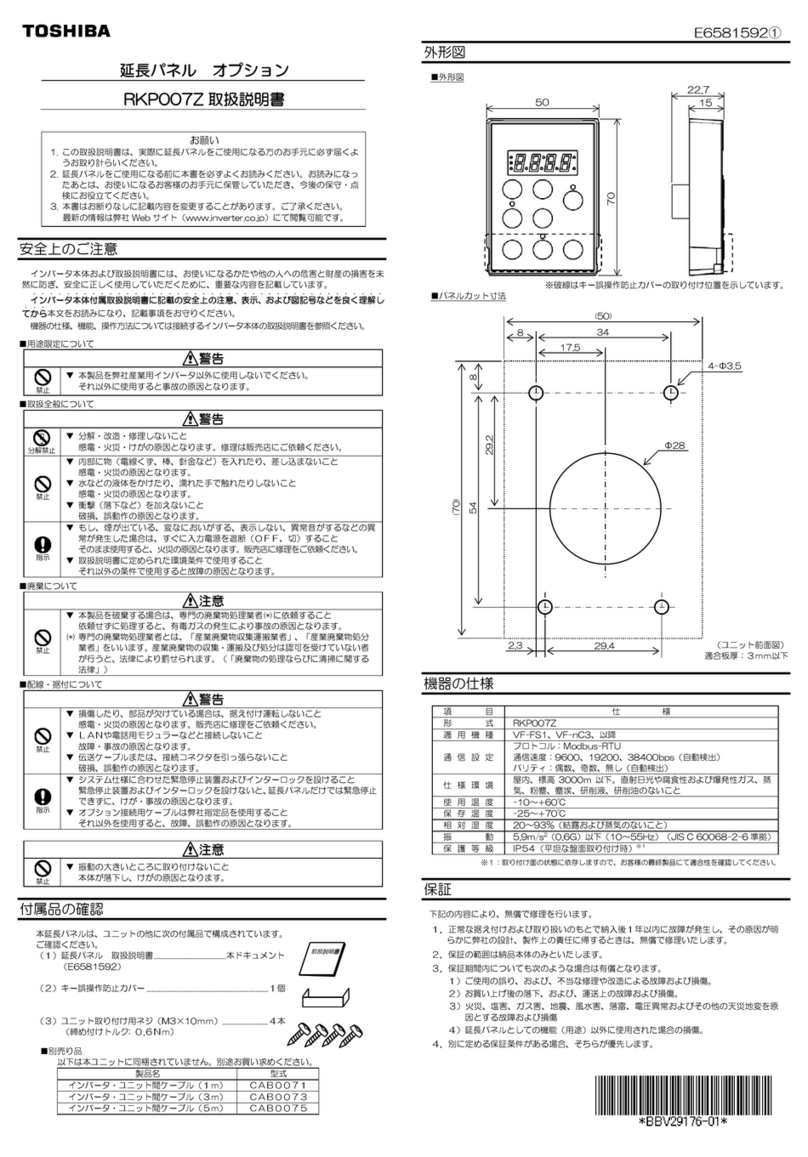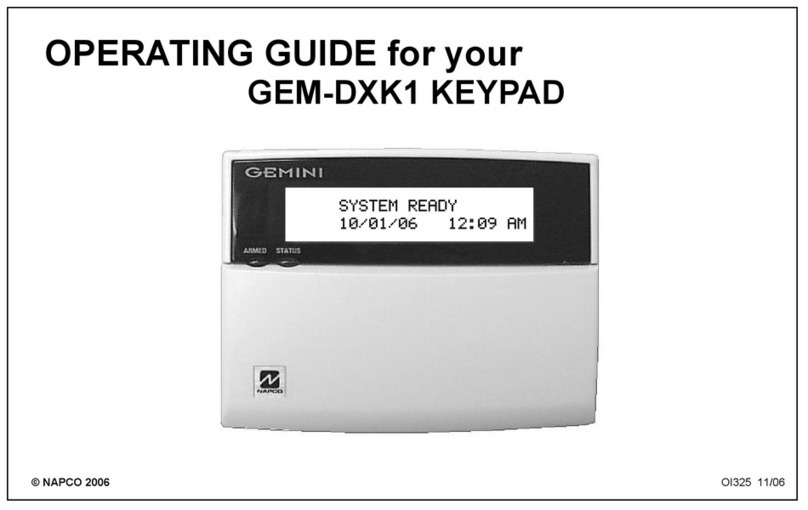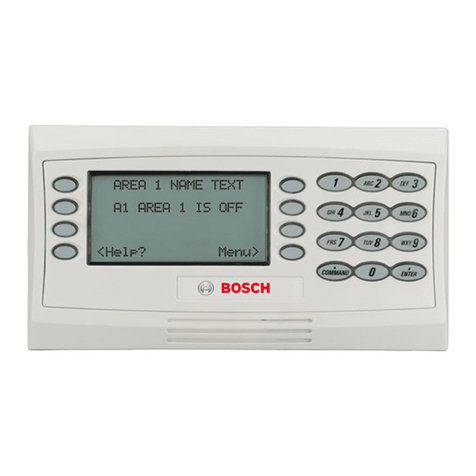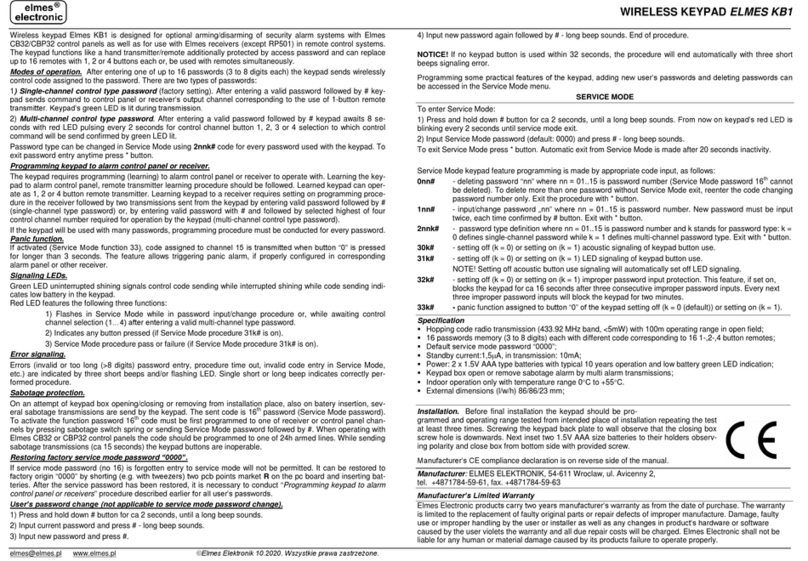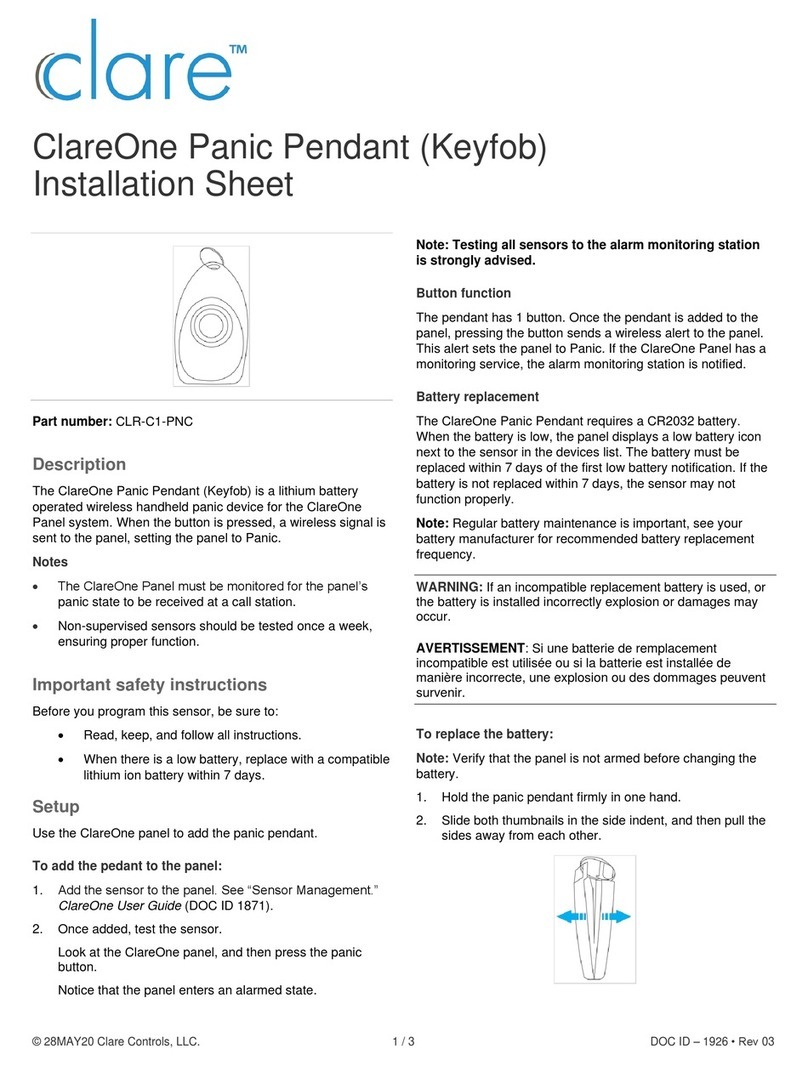
2 INT-KSG SATEL
display can switch over to the screensaver mode, in which the following information can be
presented:
any text, defined by the installer,
state of selected partitions,
state of selected zones,
state of selected outputs,
temperature from selected temperature detectors,
date and time,
keypad name.
The information to be presented in the screensaver mode is selected by the installer. This
mode is not available, unless some information is chosen to be displayed.
Touching the key enables quick toggling between the standby mode and the screensaver
mode.
The installer can configure the keypad so that when you touch and hold the 9 key for approx.
3 seconds, the display will enter the partition state presentation mode. The status of
partitions operated by the keypad (including those from which alarm is signaled on the
keypad) is presented by means of symbols. If the display has been switched over to this
mode, the screensaver mode will not be entered. The display will return to the standby mode
after you touch and hold the 9 key again.
If some predefined events occur, additional messages may appear on the display (e.g. auto-
arm delay countdown, entry/exit delay countdown, alarm, etc.).
Entering the user code, i.e. the user authorization, will open a menu containing the functions
that are available to the user. The functions are presented in four lines. The currently
selected function is presented in negative. How the function related information is presented
depends on the specific character of the given function.
The way of display backlighting is programmed by the installer.
1.2 System state indication LEDs
- yellow LED. Slow blinking indicates trouble. The LED goes off when partitions
operated by the keypad are armed (the installer can configure the keypad so that the
LED can only go off when all partitions operated by the keypad are armed).
- green LED. The lit LED indicates that all partitions operated by the keypad are
armed. Blinking indicates that some of the partitions operated by the keypad are
armed, or that the exit delay countdown is running.
- green LED. Blinking indicates that service mode has been entered in the control
panel.
- red LED. If lit or blinking, the LED indicates an alarm (or alarm memory).
Information about the armed state can be extinguished after a time period defined by
the installer.
If the installer has enabled the G
RADE
2
(INTEGRA) / G
RADE
3 (INTEGRA Plus)
option:
the LEDs provide information about alarms only after the code has been entered
and confirmed with the key;
flashing of the LED means that there is a trouble in the system, some zones are
bypassed, or that there was an alarm.
